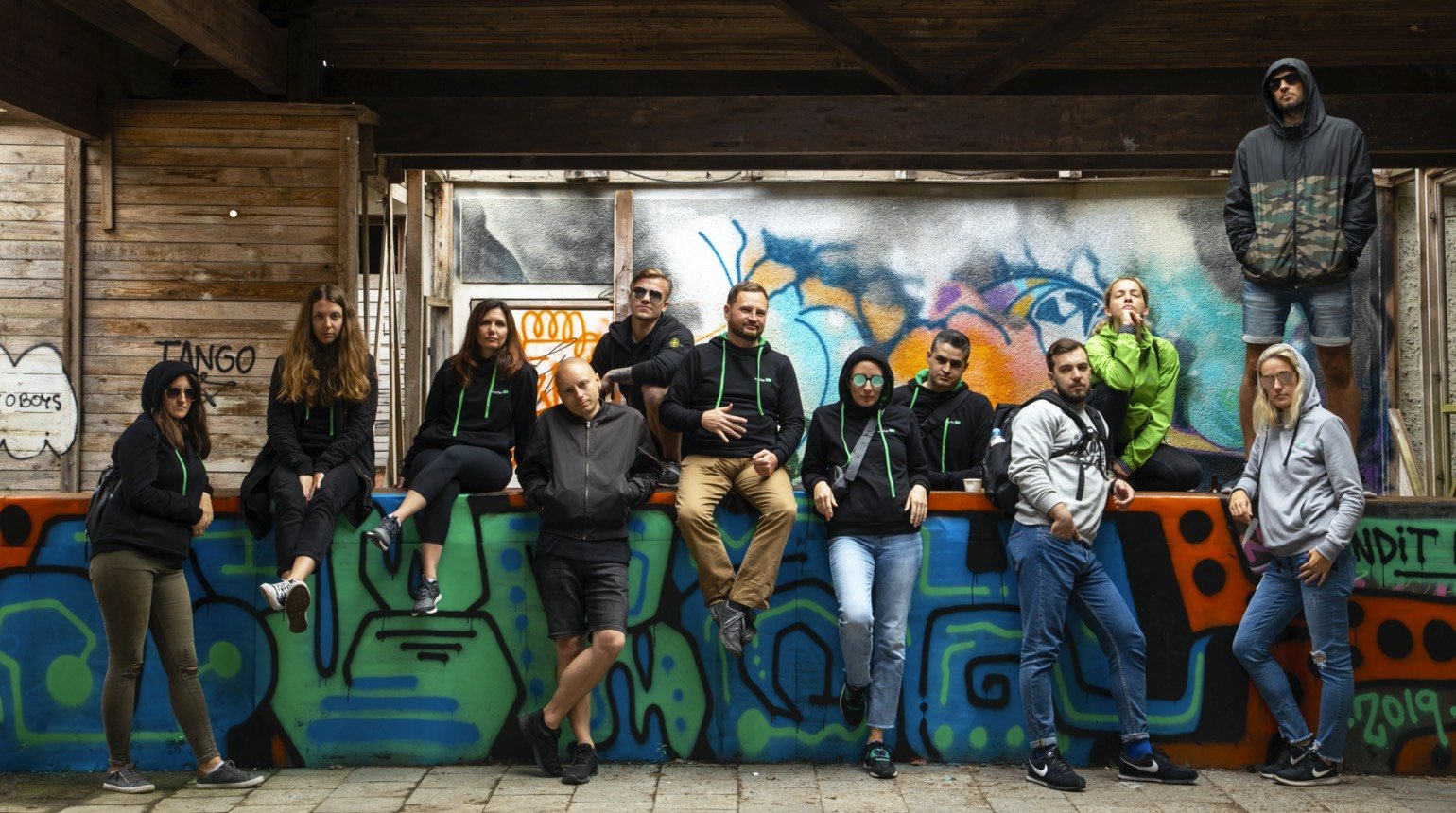How we’re building a remote work culture where everyone thrives
We’ve been a remote-first team ever since we let our remote work “guinea pig” Silvestras test the waters in 2014.
When we realized that remote work culture was our jam, we went all-in. Since that moment, it’s been a challenging but oh so fun ride.
The challenging part about building a remote work culture is making sure everyone knows what to do and has the tools to work efficiently and independently. Good communication is essential, as well as your team’s motivation and connectedness. With a small team, these challenges are easier to overcome, but as your team grows bigger it gets trickier.
MailerLite’s team currently has over 60 people—all working together virtually (and some IRL). Our remote culture is based on clear company values and different strategies to enhance the engagement of our team. This is our blueprint for building an effective remote company culture.
1. Get crystal-clear on your company values
When you’re the CEO, you know WHY you build your business. Does your team know too? To get people excited and on board with your mission, it’s important to clearly communicate the company values.
To craft your values, ask yourself things like:
- What does success mean for my business?
- What is the main value of my product or service?
- What mindset do I want my team to have?
- What do I want my customers to say about the business?
- How is my team collectively working towards goals?
Writing down MailerLite’s company values helped us greatly in setting expectations for existing and new team members. Our values show how we work and what we want our product to be.
We value:
- Long-term relationships with existing customers
- WOW support experiences for everyone
- Lasting results, not quick fixes
- Positive, open and innovative minds that welcome change
These are just a few examples. These company values make sure we’re all heading in the same direction. Our support team knows that good customer feedback is valued more than how many tickets are closed. Our development team focuses on building features based on customer demand, not on developing as many features as quickly as possible.

Our company values guide us in day-to-day and long-term decisions.
Though your company values need to be clear, they can totally change over time. Ours surely did! Discover our personal journey and how we embraced change here.
2. Go all-in once you decide to be remote
Once you decide to go remote, it’s better to go all-in. Instead of offering a few remote days per month or only allowing some people to work remotely, it’s way better to make it a policy for everyone. This way, you can change your workflows and center all communication around a remote structure.
When everyone communicates online, there is no loss of information. People that work remotely shouldn’t feel like they need to be in the office to be fully informed.
At MailerLite, we even talk on Slack when we’re in the same room. For DMs, this isn’t always necessary but for group chats it is. It also makes it easier to find and reread information.
3. Trust your team
The worst thing you can do after introducing a remote policy is to start micromanaging. That contradicts the entire concept of working remotely and will make your team go crazy.
As a manager, you have to trust your team to work on their own. At MailerLite, each person has different tasks, but everyone knows what’s on their schedule for the week. Some work in sprints, while others have tickets to resolve or content to publish.
Every Friday, team members write down what they’ve accomplished that week. MailerLite offers the freedom to work independently but team members are expected to find the motivation, discipline and routines that make them the most productive. For each team member, this strategy might look different.

Trust your team, let them accomplish their tasks their way and organize weekly check-ins to stay updated about everyone’s progress.
Because we’re such a close-knit team, it does become apparent rather quickly if someone isn’t the right fit for the job. If you communicate well and make people feel involved, there’s no need to micromanage a team.
4. Increase engagement with remote-team communication
Some say, “Building a healthy work culture with a remote team can’t be done.” Let’s debunk that myth right now.
The key is to find ways for people to connect and engage, especially those that aren’t working in the same department and therefore don’t need to communicate per se.
We use a variety of strategies to learn more about each other’s personalities and interests:
- New team members share their interests and 1 fun fact when they join
- Everyone takes the 16 personalities test
- We organize team-building activities during workation
- … and creative days (a once-a-quarter day off to unplug and explore)
- … and group video calls on off-work topics (latest inspirations or summer plans)
- … and Slack channels to bond over specific topics (music, travel, movies and more)
By sharing experiences and talking about things we love outside of work, it’s easier to find like-minded colleagues to continue the conversation with.
5. Introduce remote tools that boost productivity
All of our communication happens online, so it’s a priority to use tools that make it easy and effective to organize messages and keep track of what’s going on.
We love Slack for all communication, both private and group conversations. You can pin messages, style text to highlight important parts and easily search for documents and content. We have work channels for different teams and projects, as well as fun channels for off-topic chit-chats.
Notion and GitHub help us to document our roadmap, tasks and progress. We can track the development of tasks, see who’s involved and easily pull up any additional information within the task’s issue.
Our remote toolkit contains a couple of other tools. Read our tools for remote teams article to find out which ones we’ve gotten to love.
6. Implement team-building strategies for remote-first teams
Remote team collaboration, how do you make it happen?
We decided early on that physical, human-to-human contact is important for us. That’s why since 2016, we’ve brought the entire team together. During this week-long meetup that we call workation, we brainstorm, plan our roadmap, connect, learn, go on adventures and laugh (a lot)!
During workation, we host activities that bring us closer together. From blindfolded hikes to collective singing and mixed group dinners. Understanding your team members’ personalities and values is powerful, as these learnings can be taken into consideration when collaborating.
Hosting these get-togethers twice a year has made our team more tight-knit, productive and motivated.
7. Acknowledge employees from afar
As much as we’d like to, it’s physically hard to give high-fives or back pats to team members when they do something that rocks. That’s why we show virtual love—whether that may be via an appreciation message on Slack or by giving a virtual high-five during the monthly reviews on 15Five. Our team leaders also share their gratitude during monthly feedback video calls.
Furthermore, we dedicated several Slack channels to spreading love. In #proud-moments, we share encouraging messages and compliments that we receive from our customers. In #kudos, team members can show gratitude to each other—because of their help, their accomplishment or just because.


